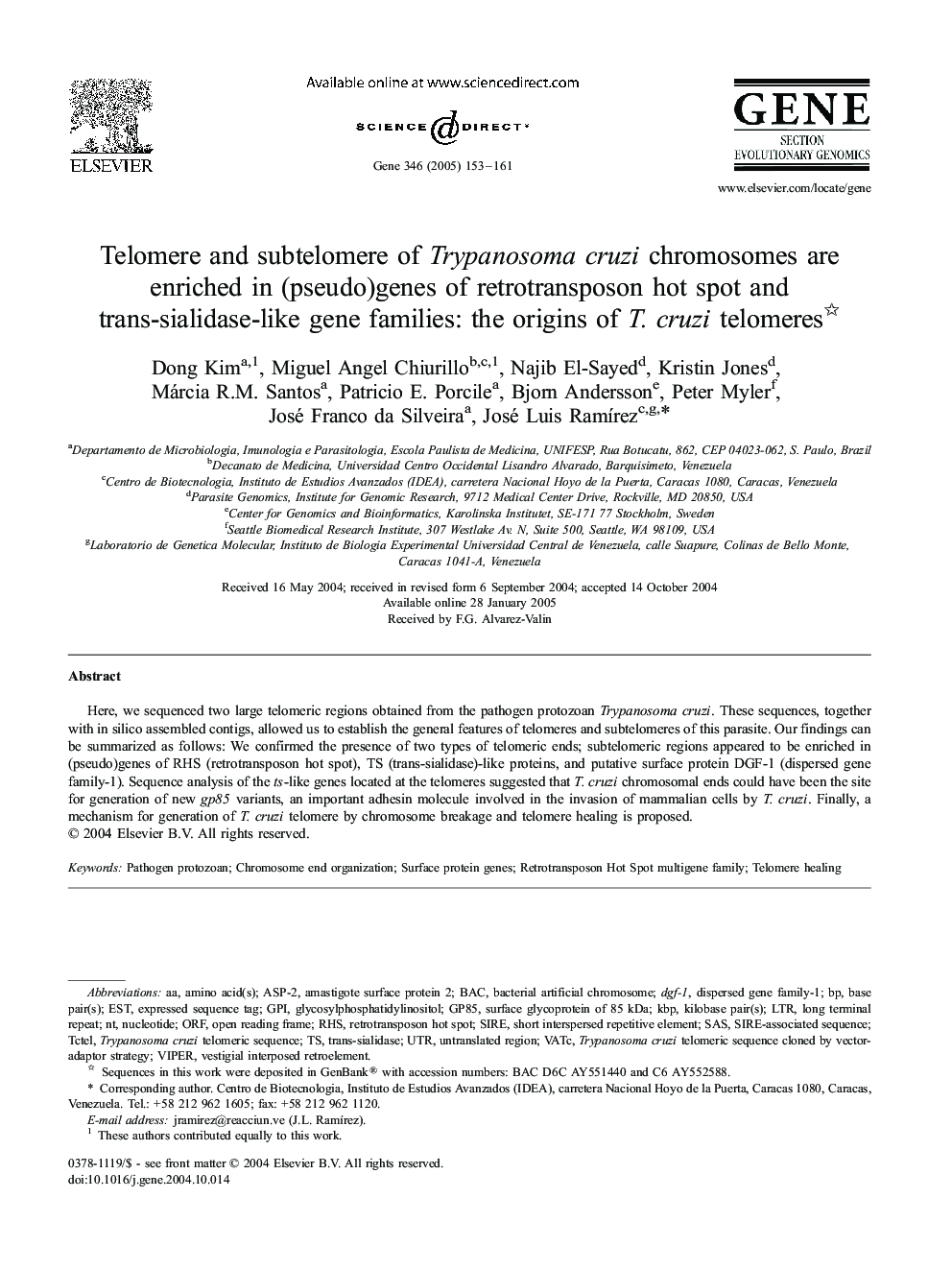| Article ID | Journal | Published Year | Pages | File Type |
|---|---|---|---|---|
| 9127160 | Gene | 2005 | 9 Pages |
Abstract
Here, we sequenced two large telomeric regions obtained from the pathogen protozoan Trypanosoma cruzi. These sequences, together with in silico assembled contigs, allowed us to establish the general features of telomeres and subtelomeres of this parasite. Our findings can be summarized as follows: We confirmed the presence of two types of telomeric ends; subtelomeric regions appeared to be enriched in (pseudo)genes of RHS (retrotransposon hot spot), TS (trans-sialidase)-like proteins, and putative surface protein DGF-1 (dispersed gene family-1). Sequence analysis of the ts-like genes located at the telomeres suggested that T. cruzi chromosomal ends could have been the site for generation of new gp85 variants, an important adhesin molecule involved in the invasion of mammalian cells by T. cruzi. Finally, a mechanism for generation of T. cruzi telomere by chromosome breakage and telomere healing is proposed.
Keywords
Related Topics
Life Sciences
Biochemistry, Genetics and Molecular Biology
Genetics
Authors
Dong Kim, Miguel Angel Chiurillo, Najib El-Sayed, Kristin Jones, Márcia R.M. Santos, Patricio E. Porcile, Bjorn Andersson, Peter Myler, José Franco da Silveira, José Luis RamÃrez,
